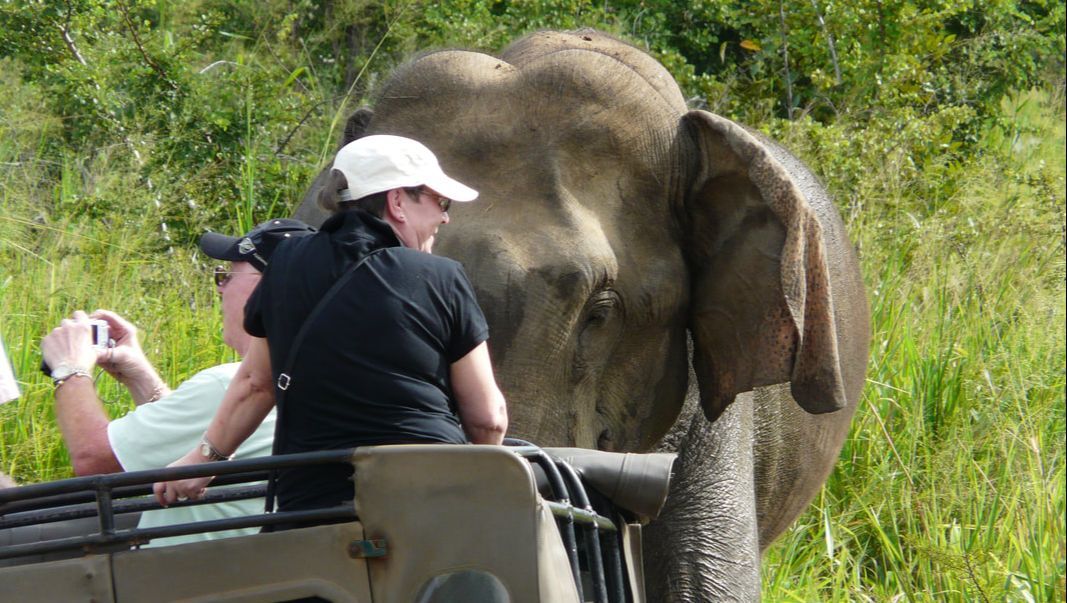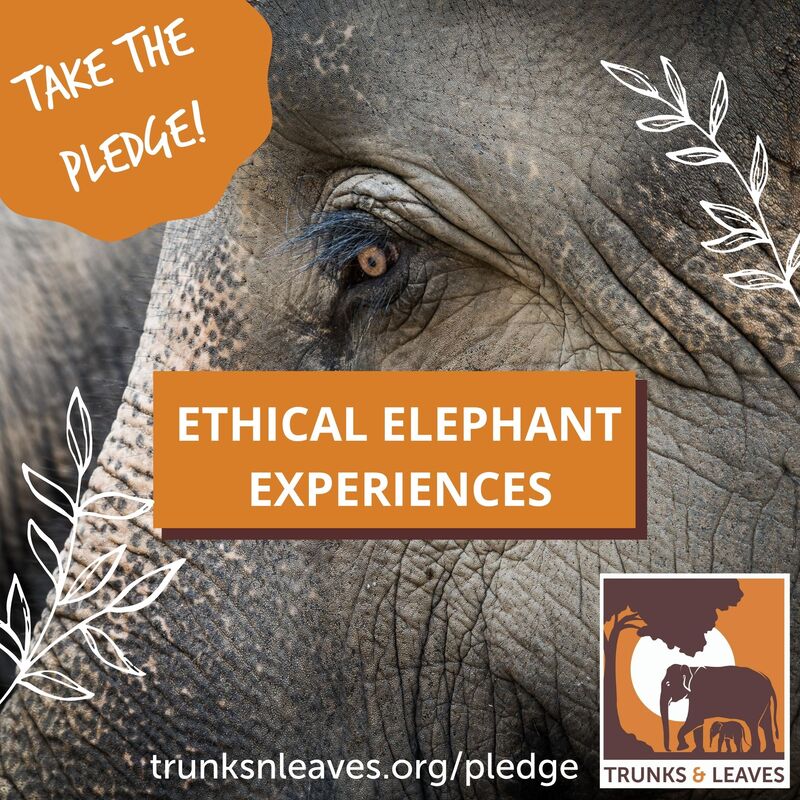Commit to Ethical Elephant Experiences!
|
Be an ethical traveler. If you love elephants, remember that elephants are wild animals, never domesticated. Elephants in captivity are just that - captives. If you have the opportunity choose to view elephants in the wild, safely. Avoid situations in which elephants are chained, confined, or subjected to grueling work loads.
Are you a Social Media Influencer, Travel Writer or Blogger? Follow the guidance below to set a good example for your followers and refrain from encouraging practices that endanger elephants! Considering volunteering? Read up about the practices you might be supporting with your funds. Baby elephants are cute, but please resist the urge to bottle feed and pet them, as this can support a thriving illegal industry dependent on their capture from the wild. Close contact between people and animals that are semi-free roaming also creates opportunities for disease transmission - not good for an endangered species. The following information will help you be a responsible traveler, and get the most out of your experience with elephants in Asia. |
|
|
The following advice is from the Udawalawe Elephant Research Project, based on years of observing elephants in the wild. Whether on your own, or with a safari service, insist that your tour guides and drivers adhere to the following - remember that it is as much your responsibility as theirs.
|
|
|
Ecotourism or Eco-exploitation?
Questions to Ask:
|
|
Tourists in range countries should not support events using captive elephants purely for entertainment since this drives the capture of young animals from the wild. While animals in captivity are required to be registered by local authorities, this does not necessarily happen. Asian elephants have unique challenges in each range country, with the uniting fact that they are highly threatened everywhere. Be sensitive to local cultures, and their traditions, realizing that not all captive situations are the same. Here are things to consider.
|
Riding elephants: Is it ever ok?
Temples and Cultural Attractions
"Orphanages," "Sanctuaries," and Volunteering
|
Sanctuary or Scam?
Questions to Ask:
 Click for PDF of the full report by World Animal Protection, released in 2020. Click for PDF of the full report by World Animal Protection, released in 2020.
Some key highlights and findings from World Animal Protection's report on the conditions of captive elephants in the tourism industry:
"These captive management systems resemble 'intensive management' systems of livestock...When managing elephants intensively it is crucial to recognize that some procedures may be necessary to safeguard the keeper, visitors, or property from harm. However, their necessity does not make them any more acceptable or better for the elephant." "A true elephant-friendly venue is purely observational for visitors, where the safety of visitors and wellbeing of elephants reduce the need to constantly control the animals." "The notion from many proponents of the captive elephant industry that there could be an acceptable way of keeping elephants within a commercial industry is deeply worrying...This unsuitability is highlighted further by the risks to the lives and wellbeing of keepers and people around elephants and the financial dependency on tourism. As evidenced by the Cobvid-19 pandemic, the decline oin tourism has led to a crisis where captive elephants are at risk of starvation." |
Be Part of the Solution! |
|
|
SPEAK UP for elephants!
Will you commit to Ethical Elephant Experiences?
|
For the Responsible Traveler
Educate yourself further with these freely available publications and media resources. Note that we do not necessarily endorse the views of third party content.
For Tour Operators
We recommend working only with facilities with verified legal standing and documented commitments to proper standards. Unfortunately, there is no universal set of guidelines for good practice. The following are some examples of standards and practices, none of which are perfect but preferable to nothing.












